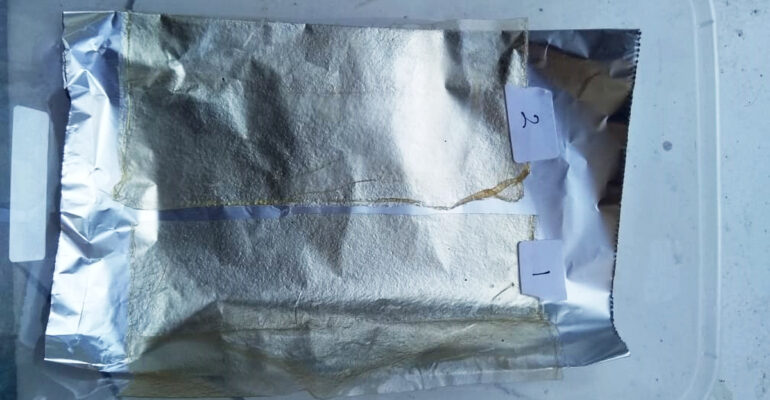IPB University Students Create Plastic Bags from Catfish Skin

Plastic is generally dominant in daily use and has a non-biodegradable character which is difficult to decompose. An alternative for plastic wrappings which is biodegradable and environmentally friendly is needed to mitigate environmental pollution. The raw materials that can be used for making alternative biodegradable plastics are gelatine and seaweed. Therefore Yusuf Laduni, Ari Elisa Ratih, and M. Hafni Arief Akbar students of IPB University did research for creating plastic from natural products.
“Gelatine as a raw material that is used comes from catfish skin. The seaweed used is Euchema cottonii. These two materials are used due to their convenience in Indonesia,” Yusuf explained.
The students of the Department of Marine Product Technology and Marine Technology (FPIK) explains that these raw materiels were chosen due to their superiority among others easy to find, environmentally friendly, and a price that can substitute one another between the gelatine and the seaweed which can reduce production costs.
Catfish skin is extracted and mixed with seaweed. Gelatin is made by reducing the size of the catfish skin, soaking it an acid solution then washed off with water and extracted at a temperature of 65 degrees Celcius. The seaweed porridge is made by bleaching the seaweed than soaking it with water and blended with a blender. Then all the materials are mixed until they unify then printed and dried in an oven,” he explained.
This research was supervised by Dr. Mala Nurimala and was successfully funded by the Ministry of Research, Technology and Higher Education (Kemenristekdikti) during the Student Creativity Program for Research (PKM-PE)2019.
The results of the experiment were in the form of plastic sheets that were still in development. The tests are at the final stage, however, there are still many deficiencies in the product that was produced. “The product is still a little bit sticky and yellowish in color, and can only be used to package a dry product, the product must be in the form of sheets similar to the plastic. Temporarily this product can only be used as a wrap,” he explained. (AVR)



